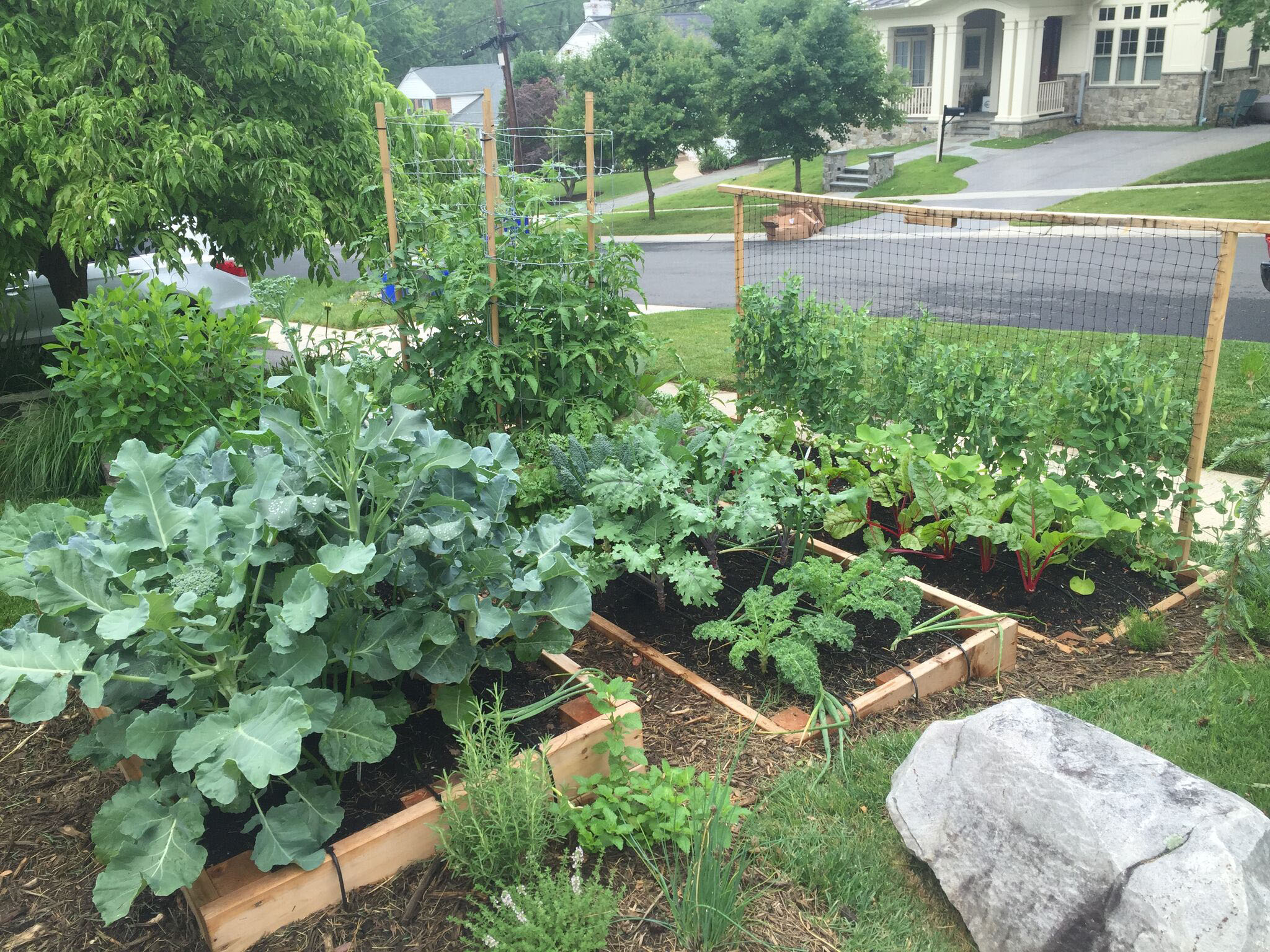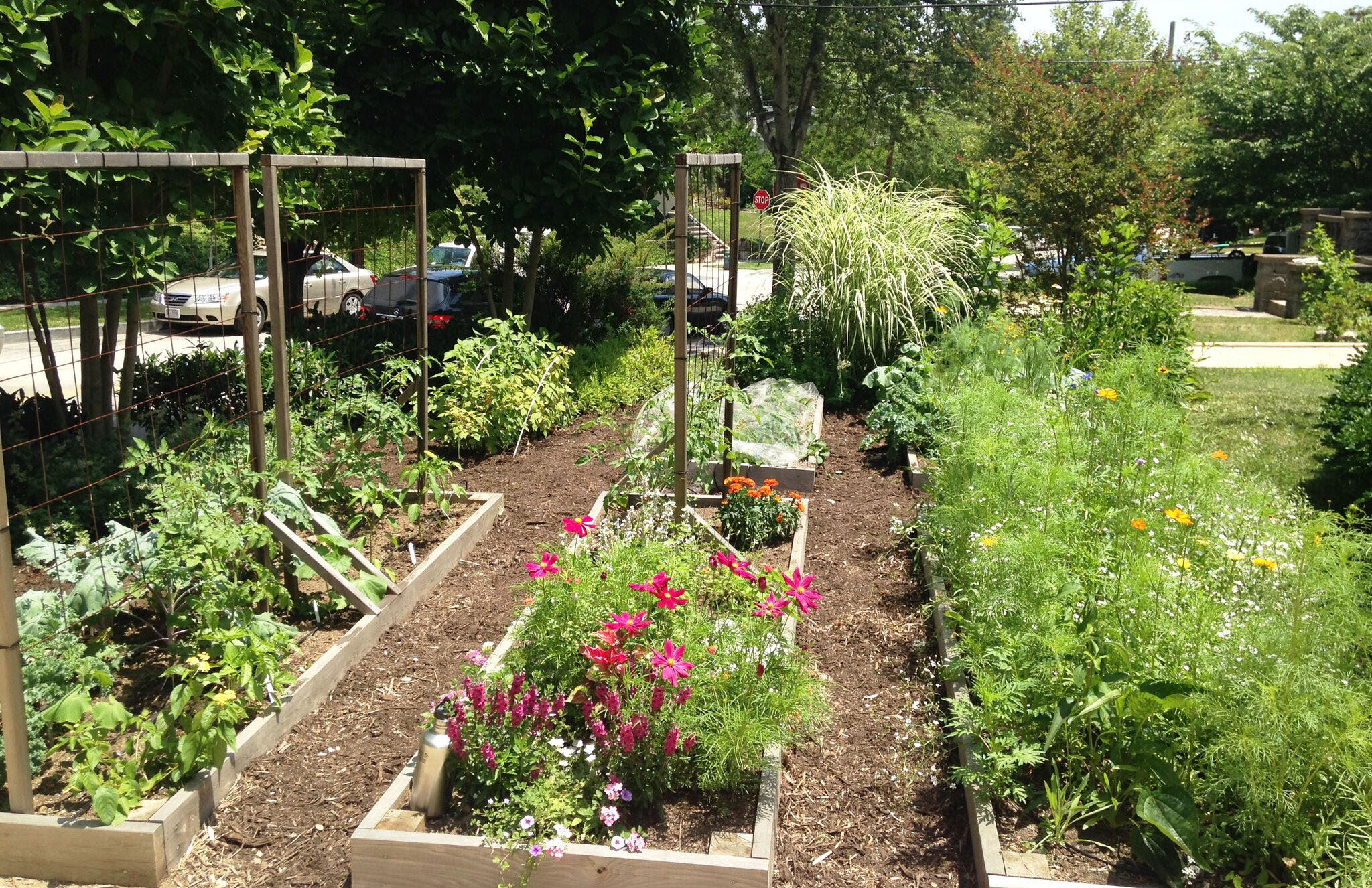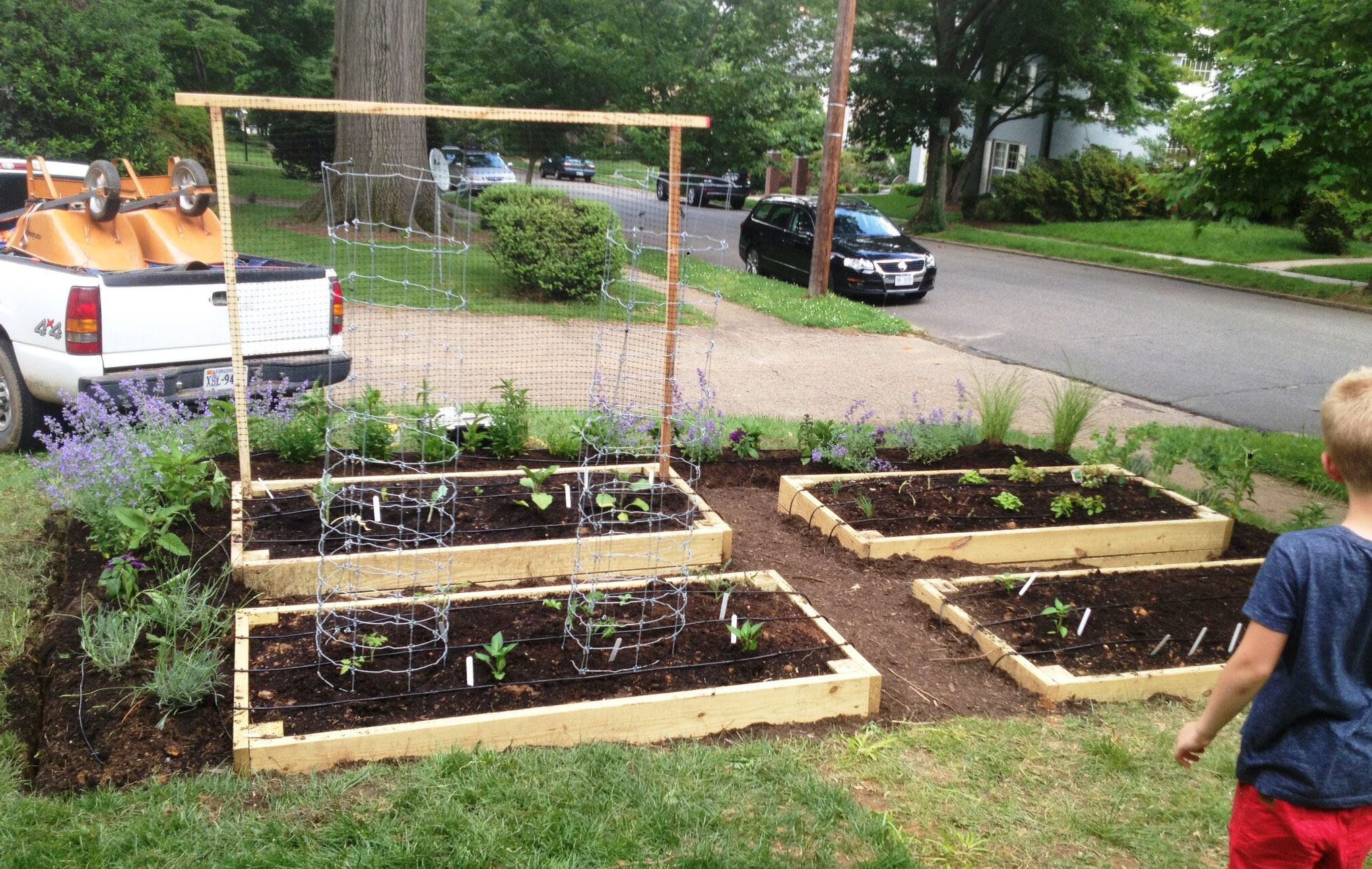Can I Grow Vegetables in My Front Yard
If you've wanted to start growing food merely don't have much space, the answer may be right in forepart of you lot — your front yard, that is. Front yard vegetable gardens are a growing trend. Nevertheless, some people don't fifty-fifty consider growing food in the front yard because they think information technology might look messy or lead to neighbor complaints.
Those folks should think over again, according to Natalie Carver, horticultural manager for Beloved and Carrots, a company that designs, installs, and maintains urban vegetable gardens for homeowners throughout the Washington D.C. metro surface area. "A well maintained vegetable garden is going to await beautiful," she says. "I think a lot of folks don't know that vegetables are substantially really expert looking."
 These front-yard garden beds, separated with rows of stepping stones, look neat and tidy. All photos are of front grand gardens designed by Dearest & Carrots.
These front-yard garden beds, separated with rows of stepping stones, look neat and tidy. All photos are of front grand gardens designed by Dearest & Carrots.
Why Grow Food in the Front Yard?
For some people, growing food in the front yard is the but choice due to space or sunlight problems. Some homes don't fifty-fifty take a back 1000, or information technology's taken up past a parking pad or an alleyway. Maintaining a grassy lawn requires resource, like water and lawn mower fuel, to maintain. Why not put that energy into growing plants y'all tin really eat?
Front yard gardens can also be swell customs builders. "I love working in them considering you actually meet people walking by," says Carver. "For homeowners, you'll really get to know your neighbors. Y'all'll be outside and talking to people, which is more of the social side of gardening that brings people together."
Before digging in, it'southward all-time to check your city ordinances, which might accept rules well-nigh things like how far a garden needs to exist from the sidewalk.

Forepart-M-Friendly Vegetables
When designing a front yard garden, Carver likes to contain vegetables from the brassica family, which includes kale, collard greens, and broccoli. They abound upright to a few feet tall with large, thick green leaves. Planting a few varieties of different colors can exist quite beautiful. Tuscano kale, for example, can have dark dark-green leaves, which contrast nicely with a curly red variety. "At that place'south one called red boar that'due south deeply curly and then you go a cool texture," says Carver. Some of these leaves will turn a darker shade of cerise in winter. For even more color, plant rainbow chard. The vivid lights variety has cheerful cerise, yellow and white stems.
Effectually the brassicas, Carver suggests incorporating a edge of plants from the allium family, which include garlic, leeks, onions, scallions, and green onions. She likes their upright, long green blades and their fuss-gratis maintenance. "Y'all establish them and basically don't touch them for a couple months," she says. They're also a great companion establish for kale considering they repel some of the bad insects.
Carver suggests calculation a few containers of plants throughout the garden to get things off the footing and add structure, but don't go overboard or the garden may start to await cluttered.

Accent with Flowers
Carver says Honey and Carrots oftentimes incorporates almanac edible flowers into the corners their vegetable gardens. Not only do they provide a colorful frame to the garden, they serve other purposes. "They feed beneficial insects, they feed butterflies, they feed birds, and they also attract adept bugs that will eat the pests in the garden," she says. And then, when y'all harvest your salad greens, you'll take a few edible flowers for a beautiful garnish. Carver's favorites are violas, calendula, and bachelor'due south buttons.
Herbs for Everyone
Even the smallest yards usually take room for herbs. They're evergreen and so they'll look good throughout the year in some climates. Carver suggests sage and lavander for their silvery leaves, and also thyme, rosemary, oregano. "Those you can plant right into the ground and mulch the base of operations of the establish," she says.
Maintaining Your Garden
To keep both your plants and your neighbors happy, good garden maintenance is important for a forepart k garden. Tomatoes, for instance, tin starting time to look huge and scraggly if they aren't pruned correctly or aren't trellised in tall tomato cages. Mulch liberally in your pathways and between perennial areas with an undyed mulch to go along weeds at bay and the garden looking slap-up. Prune off yellow or brown leaves as they appear.
If critters are eating your garden, Carver suggests using soft, black bird netting, which is come across-through, over the garden beds. If that doesn't work, you lot may demand a waist-high rabbit-proof argue or deer fencing.
Be a Practiced Neighbor
Equally Carver points out, front yard gardening tin be a great community builder. Neighbors volition be curious about what you're doing or might have adept tips to share. When information technology'south time to harvest, be certain to share or swap some of your compensation with your neighbors. They will thanks for it.
If don't have a grand or want to offer your front chiliad to a neighbour to garden, cheque out Shared Earth, our website that connects people who have land with people who want to garden or farm. Search listings and message with nearby gardeners or landowners to get started on your next garden!
*Follow @loveandcarrots on Instagram to see more than garden ideas. *
Source: https://sustainableamerica.org/blog/why-you-should-plant-a-front-yard-veggie-garden/
0 Response to "Can I Grow Vegetables in My Front Yard"
Enviar um comentário